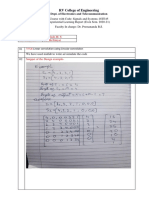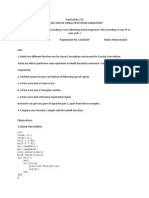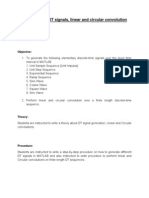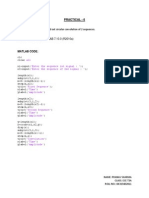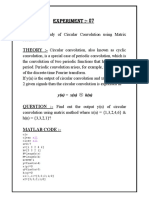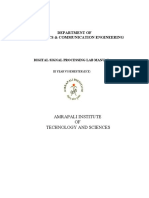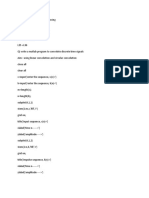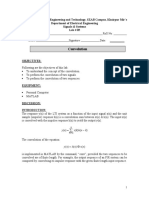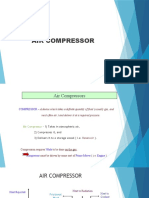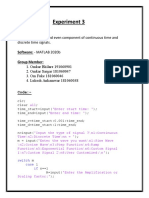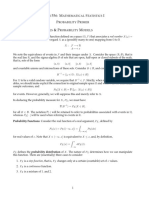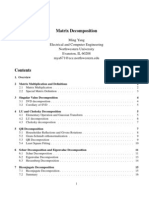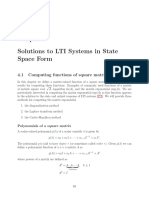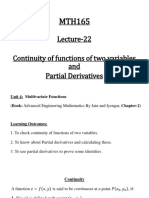0% found this document useful (0 votes)
138 views6 pagesLinear & Circular Convolution in MATLAB
This document describes an experiment to calculate linear and circular convolution of discrete time signals using MATLAB. It includes the aim, software used, group members, MATLAB code, theoretical analysis of linear and circular convolution using tabular and matrix methods, and a conclusion comparing the results of linear and circular convolution.
Uploaded by
LUKESH ankamwarCopyright
© © All Rights Reserved
We take content rights seriously. If you suspect this is your content, claim it here.
Available Formats
Download as PDF, TXT or read online on Scribd
0% found this document useful (0 votes)
138 views6 pagesLinear & Circular Convolution in MATLAB
This document describes an experiment to calculate linear and circular convolution of discrete time signals using MATLAB. It includes the aim, software used, group members, MATLAB code, theoretical analysis of linear and circular convolution using tabular and matrix methods, and a conclusion comparing the results of linear and circular convolution.
Uploaded by
LUKESH ankamwarCopyright
© © All Rights Reserved
We take content rights seriously. If you suspect this is your content, claim it here.
Available Formats
Download as PDF, TXT or read online on Scribd
/ 6







